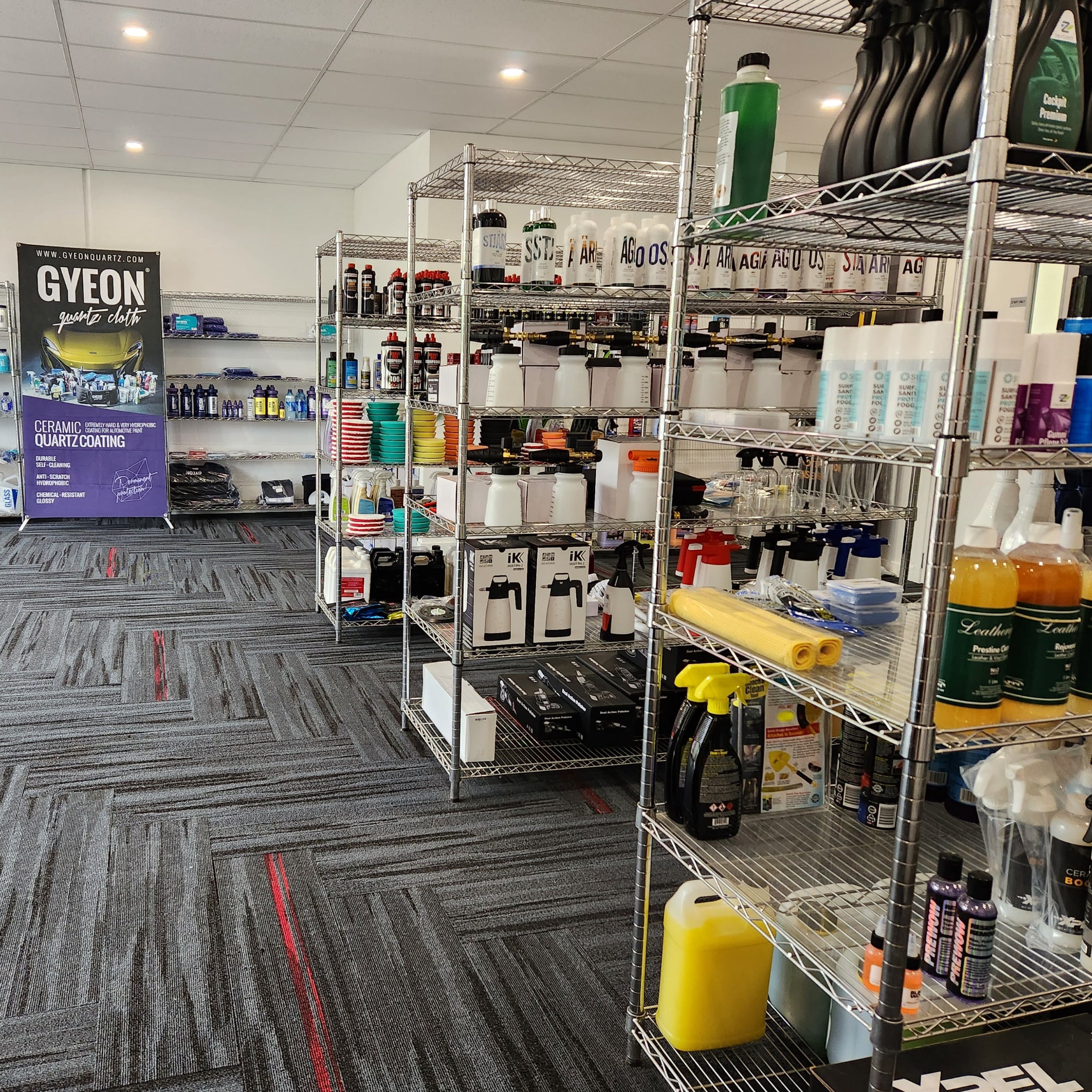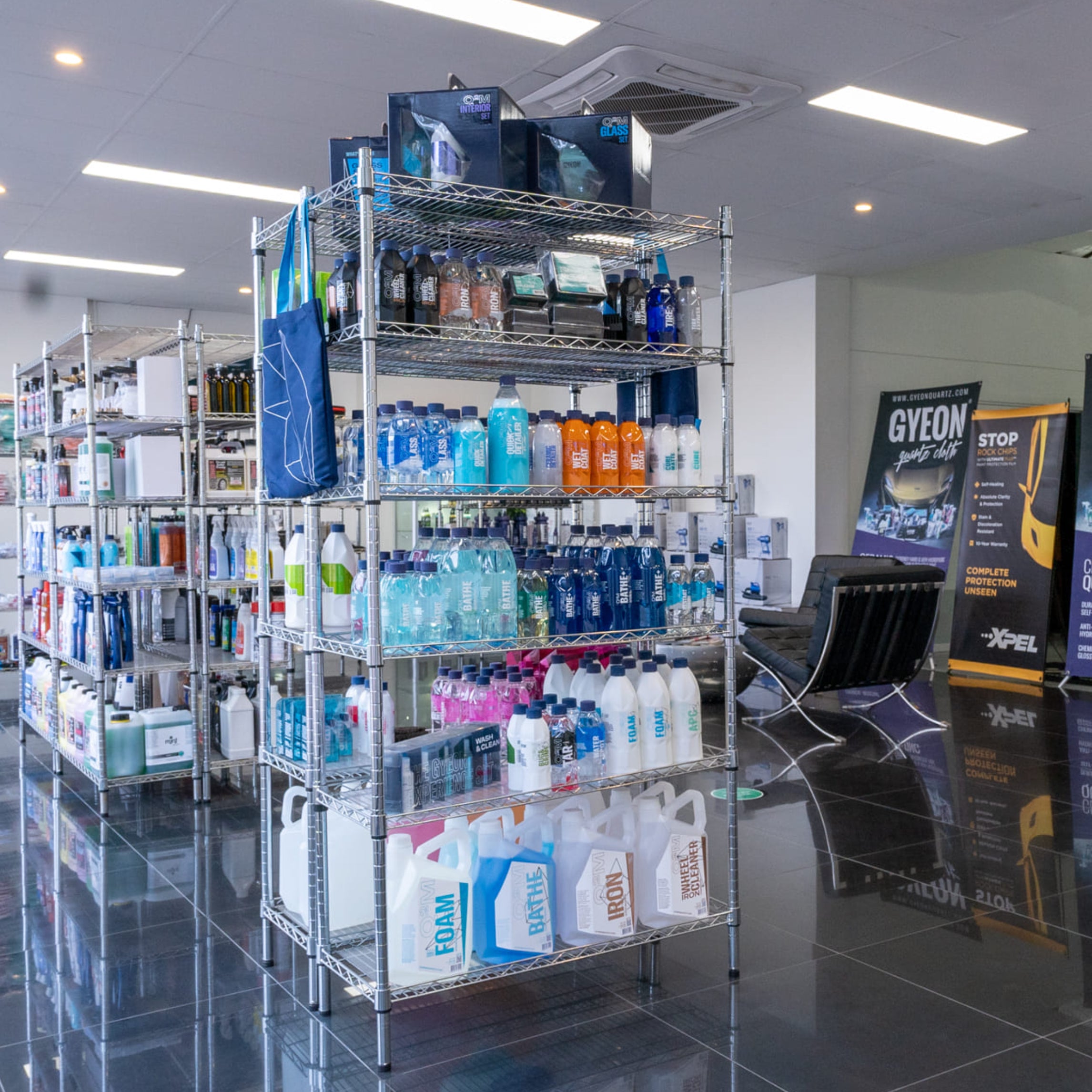Picture this: you have just spent your Saturday morning washing the car. The paint is gleaming, the wheels are spotless, the glass is streak-free. But then you spot it: that dull, chalky plastic trim around your mirrors, bumpers, or guards. Suddenly, all your hard work feels undone.
If you own a ute, SUV, or even a daily hatchback, you have probably seen it happen. The Aussie sun, salty air, pollution, and years of wear take their toll. Plastic trim loses its oils, turns brittle, and fades to an unflattering grey. The result is a car that looks older and more neglected than it really is.

Here is the good news: you do not have to live with it. With the right prep and a few smart products, you can restore trim to that deep, factory-fresh black finish and keep it that way for months or even years. This is not about those cheap, greasy dressings that wash off after a week. This is about proper restoration and protection.
Let us run through why plastic fades, the gear you will need, and the exact process to bring it back to life.
Why Plastic Trim Fades
UV Damage
The Australian sun is brutal. UV rays attack the plasticisers (the chemicals that keep plastics dark and flexible). Once they break down, you are left with brittle, grey, chalky trim. For cars parked outside daily, this can happen in just a couple of years.
Oxidation and Fallout
Exposure to oxygen, dirt, road grime, and coastal air oxidises the surface. The plastic becomes porous, traps contaminants, and loses that rich colour.

Harsh Cleaners
Sometimes the culprit is us. Using kitchen detergent, aggressive degreasers, or bargain-bin car soaps strips away the oils in plastics. They might look clean at first, but it fast-tracks fading.
The bottom line: to fix it properly, you need more than a cover-up. The process is clean, decontaminate, protect.
Your Trim Restoration Toolkit
Before you start, it pays to have the right gear on hand:
- Prep Cleaner or a panel wipe spray, like GYEON Prep to strip away oils and residue, or an All-Purpose Cleaner (APC): Something safe but effective, such as Nextzett Plastic Deep Cleaner, to scrub out dirt and old silicone dressings.
- Trim Coating: This is the game-changer. Look for ceramic or polymer-based coatings designed for exterior plastics, like GYEON Trim. It bonds to the surface for long-lasting protection.
- Applicators: Foam or microfiber blocks for even coverage, ensuring a smooth application on every surface.
- Microfiber Cloths: Soft, edgeless cloths for wiping and buffing. Use these to efficiently buff off excess product and wipe down surfaces, ensuring no residue clings to the glass or paint.
- Painter’s Tape: Low-tack tape to shield paint and chrome from accidental smudges. Place a towel underneath as an added precaution when restoring trims or applying spray paint to nearby areas.
With these tools, you can deliver a professional-quality result in your own driveway.
Step 1: Clean and Prep the Surface
Mask It Up
Apply painter’s tape along the edges of your trim. It is a simple step that saves headaches later.
Scrub Away the Old
Spray a Trim Cleaner, such as Nextzett Plastic Deep Cleaner, or an APC, like Duragloss All Purpose Cleaner Concentrate, onto the trim. Work it in with a soft detailing brush to lift dirt, old silicone-based dressings, and any loose oxidation. Focus on textured plastics, which trap grime. You may find this step is not needed when you first look at the trim, but dirt and grime can get into your Trim's grooves and can be hard to see, so do not skip this step.

Rinse and Dry
Rinse thoroughly and allow to dry completely. The trim should now look matte and ready for decontamination.

This step is often skipped, but it is the difference between a coating that lasts a fortnight and one that lasts a year.
Step 2: Protection
Here is where the magic happens.
- With any coating, such as GYEON Trim, make sure you shake it well and apply a few drops to a foam applicator.
- Spread in thin, even layers using a cross-hatch motion (side to side, then up and down).
- Work panel by panel. As you apply, the grey instantly transforms back into a deep black.

Badly faded plastics may need a second coat once the first layer has flashed off, ensuring the sponge maintains contact with the surface throughout.
Step 4: Cure and Buff
- Let the coating sit for the recommended time (Check with the manufacturers instructions for specific timings).
- Buff away any excess with a clean microfibre.
- Carefully remove the painter’s tape.
- Keep the car dry and away from dust for 12 to 24 hours.
Proper curing locks in the finish and ensures resistance to UV, dirt, and fallout.
Pro Tips for Long-Term Protection
- Stick to pH-neutral shampoos like GYEON Bathe when washing.
- Keep an eye out for stains, as most trim dressings can run when wet.
- Skip the cheap silicone sprays as they look glossy at first but attract dust and wash off fast.
- Hand wash only. Avoid drive-through washes, which can scuff coatings.
What Not To Do
- Do not use a heat gun. It may make plastics appear darker for a day, but it actually damages them further.
- Do not overload the applicator. Thin, even coats bond better and avoid streaking.
- Do not skip prep. It is the single most important part of the process.
The Payoff
When done properly, trim restoration can be one of the most satisfying parts of detailing. Watching dull grey plastics transform back into a rich black finish instantly lifts the look of the whole car. More than that, you are protecting those plastics against UV, oxidation, and daily wear.
A product like GYEON Trim does not just restore colour, it chemically bonds with the plastic, creating a UV-resistant barrier that lasts years instead of weeks. With the right prep and maintenance, your trim will keep looking fresh and factory new long after the paint has been washed and waxed.
Final Word
Faded trim does not need to drag down the look of your car. With the right prep, the right products, and a bit of patience, you can restore and protect plastics at home just like the pros.
Your car will look newer, sharper, and better maintained, and the best part is the results last.





